The beginnings and development of gymnastic and Sokol exercising in Serbia
[Текст на српском] The history of physical exercising and the Sokol movement in Serbia is a significant part of the general history of the Serbian society and cultural heritage, and yet, it does not hold an appropriate place in Serbian historiography. The history of gymnastics is inextricably linked with both systems of exercising, which represented significant segments of the social, cultural, and even political life in Serbia, and in spite of ideological frameworks, their main component was gymnastics.
Body exercise (old expression for physical exercise), gymnastics, Sokol body exercise... The advent and the development of gymnastics in Serbia had their own particular path, which was inevitably dependent on the social-historical conditions, beside some other ones. During the period from the mid-19th century, until the beginning of the Second World War (1857-1941), when in a small territory several states existed – from the Principality, and then Kingdom of Serbia, followed by the Kingdom of Serbs, Croats and Slovenians and finally the Kingdom of Yugoslavia – from the very beginning, and in modest conditions, gymnastics was the foot-stone of the emergence and the pivot for the development of physical education. The time would confirm the constancy of the essence, the role and significance of gymnastics – as the chief component in the development of physical exercising, sports, education and culture in the most general sense, which, among other things, would confirm its title as a specific phenomenon of the Serbian cultural heritage.
When the Principality of Serbia had won its independence under the provisions of the Treaty of Berlin (1878), emerging as a victor from the wars with the Ottoman Empire (1876-1878), Serbian intellectuals returned from their studies abroad to liberated Serbia and wishing to improve social life they spread ideas and introduced changes, thus irreversibly altering the social conditions. That was how the young intellectual avant-garde, impressed by the values of Ancient Greece and the Renaissance spirit, brought and spread some other notions, knowledge and experiences acquired in the developed European countries, and started raising consciousness about the importance of physical exercising.
Some bearers of changes made a significant contribution to the development of organized physical (gymnastic), later Sokol exercise. Both systems of exercise are based on gymnastics. It started in the mid-19th century, at the time when physical education classes were introduced in primary and secondary schools, and when the first ideas of civil gymnastic societies appeared. Soon, knowledge of the Sokol movement and sport came in.
The appearance of organized training of gymnastics in the Principality of Serbia was preceded by the establishment of the first private schools for learning skills and practice, since 1839 in "the groups for training" the fencing and fight, gymnastics and swimming were practiced, since 1850 these skills were taught by cadets of the Artillery School in Belgrade. It will be followed by assembling the Society for Gymnastics and Fighting (1857, founder Stevan Todorović) where gymnastics was practiced in an organized way, and later the establishment of the First Belgrade Society for Gymnastics and Fighting (1882, founder Vladan Djordjevic), which will result in the establishment of similar gymnastic societies in the Kingdom of Serbia. At that time, for already two decades in the Slavonic countries, Czech Sokol movement was expanding rapidly.
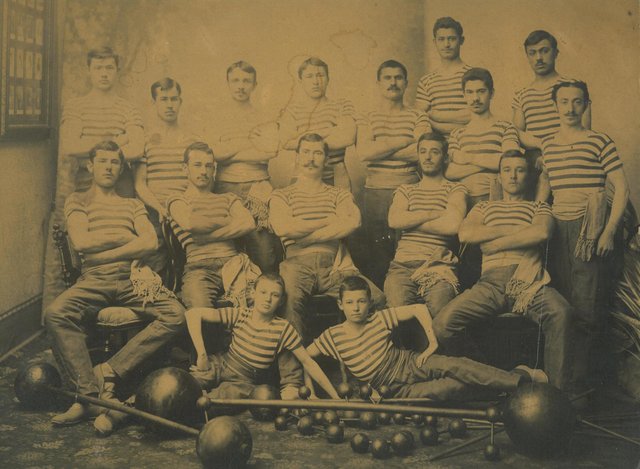
The First Belgrade Society for Gymnastics and Fighting, 1889
The acceptance of the ideology of Pan-Slavic Sokol (1891), which is reflected in physical exercise to strengthen national and cultural consciousness of the nation and liberation from the influence of Germanization and all-Slavic unification of South Slavic peoples enslaved, met the resistance of certain Serbian circles, who in free and independent Kingdom of Serbia demanded the identity and support in cultural tradition and rich history of their people. Two rival civic gymnastic trends were established and they operated simultaneously, Sokol and Chivalrous - "Sokol" and "Dušan the Mighty".
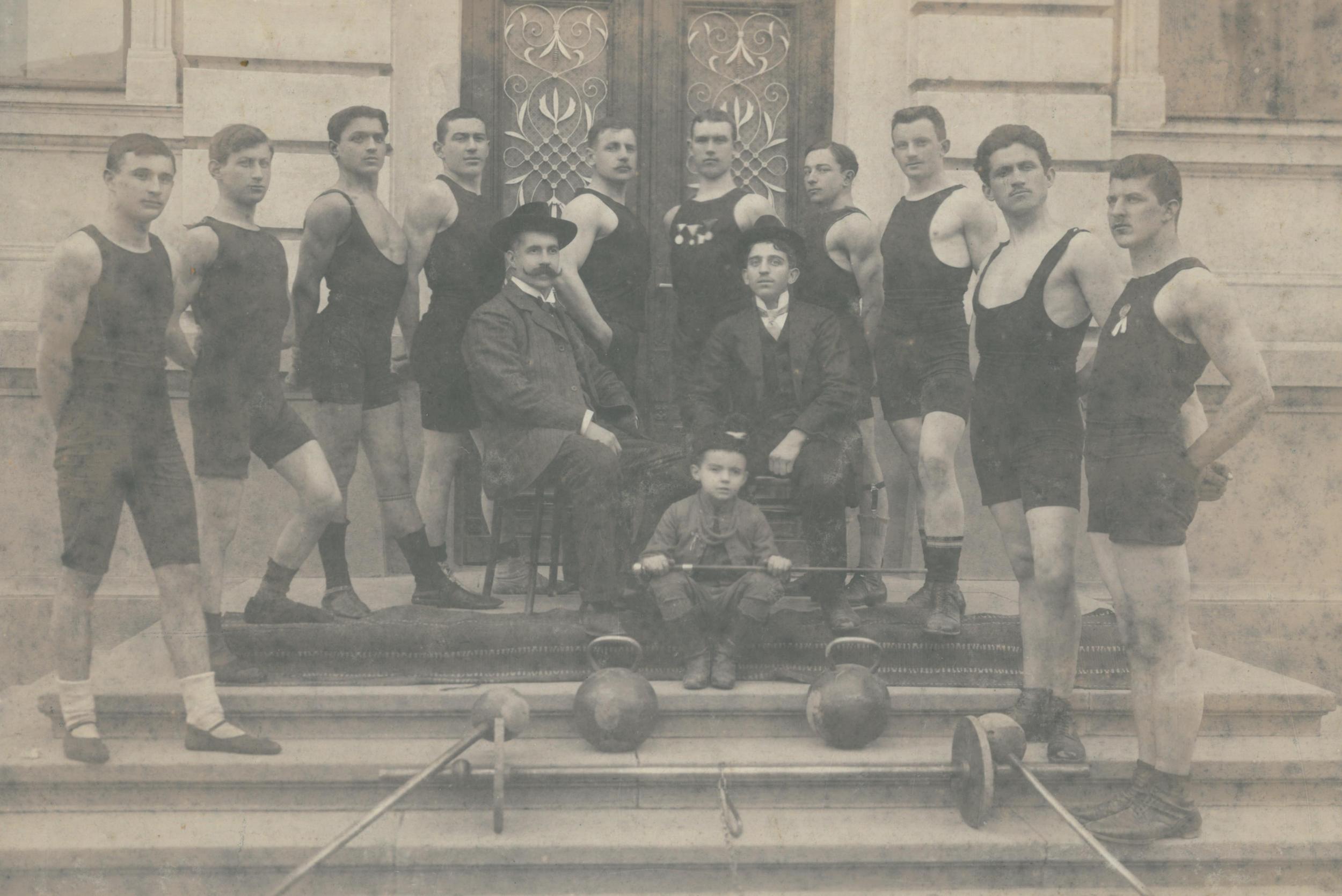
Civic Gymnastic Association "Dušan Silni"
Beside Chivalric and Sokol gymnastic associations there were other civilian associations in Serbia with different names, but what all of them had in common were – apart from gymnastics which was the pivot of their exercising programs (the so called “technical gymnastic activity”, particularly in Chivalric associations) –diverse exercises and competitions held in other activities: running, pole vaulting, fencing and sword-fighting, weight lifting, shot put and medicine ball throwing, swimming, field trips, boxing, Chivalric games (rock and discus throwing, baton fighting, wrestling, and later “French” and “English” boxing.
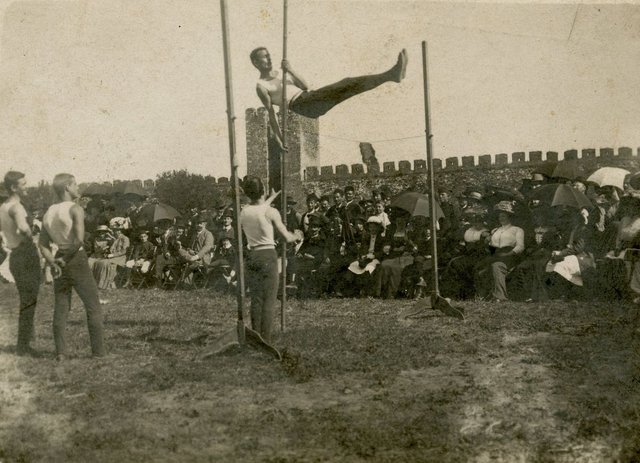
Public class of Belgrade Sokols in Smederevo in 1910, in a jump with a pole Sreten Stanić Cukić, the winner on a rally in Sofia in 1910, will be third placed on the rally in Prague in 1912
Although relations between these societies were detrimental to the development of physical culture in Serbia, the noble intentions of gymnasts for their nation and their activities in the field of advancement of abilities, health, cultural and moral rising, during 18 years of controversy, will be to the benefit of each individual, and after the unification to the unique Sokol Association named Alliance Sokol Societies "Dušan the Mighty" (1910) boom of Serbian Sokol movement began.
At that time, at the end of the 19th century modern sport came to Serbia, which was accepted by all categories of citizens, by first practicing in private schools and civic gym societies, later in the independent sports clubs. Shooting, fencing, and equestrian competitions had already been favorite traditional forms of competition in Serbia, but, through the "gymnastic classes" modern sports: archery, ice skating, horseback riding, swimming, rowing, martial arts, biking, bouncing were accepted, helped and developed. The emergence of the modern sport will be a significant incentive for the development of the Olympic Movement in Serbia. The Olympic idea (restoring ancient Olympic Games) was sustained and developed in a number of private schools, civic gymnastic societies and sports clubs in Serbia, and also the departure of King Aleksandar Obrenović to the first modern Olympics in Athens in 1896 contributed to it. The development of modern sport in Serbia led to the establishment of the Serbian Olympic Club in Belgrade in 1910 and its admission to the International Olympic Committee in 1912 (IOC).
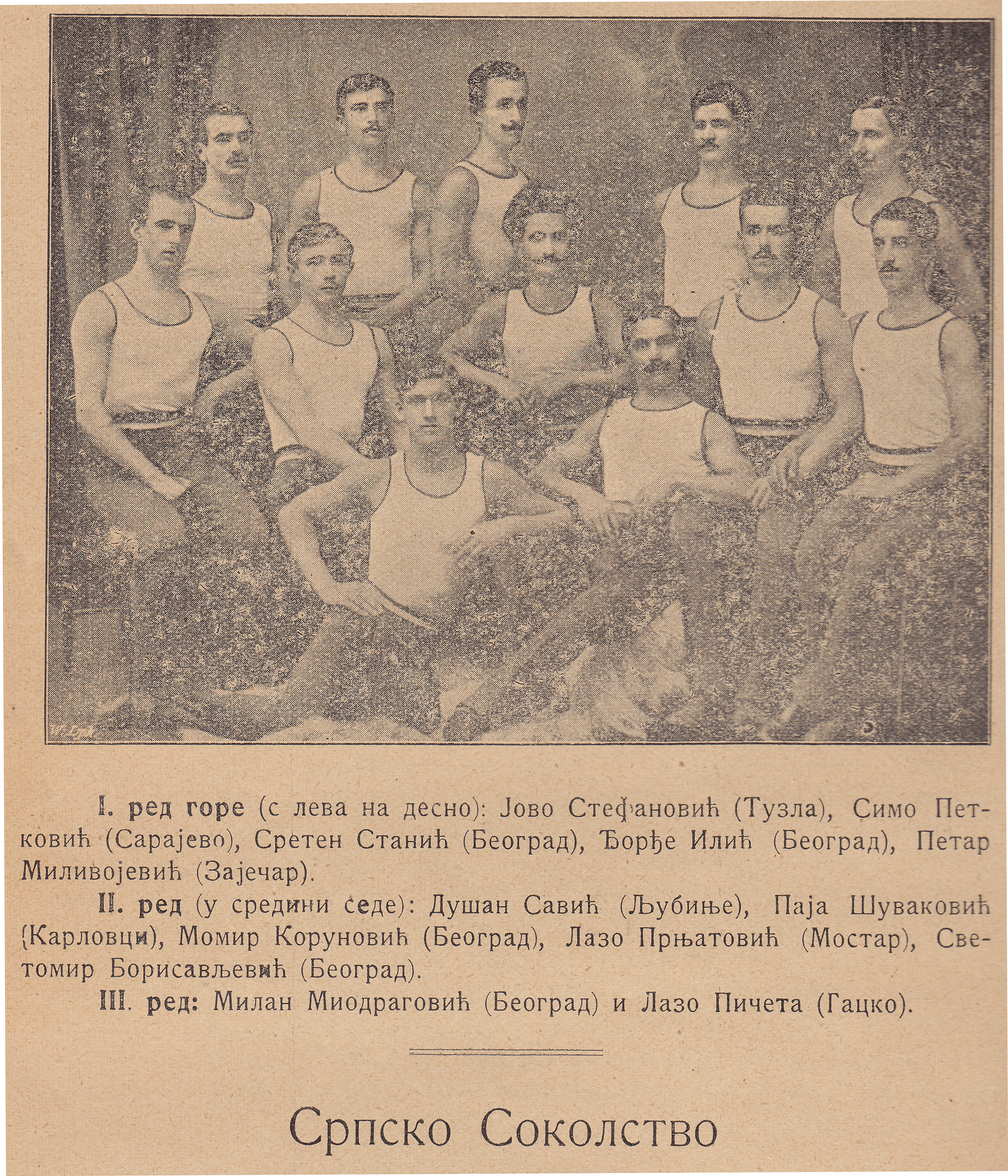
Professional improvment of Serbian Sokols in Prague, from the newspaper "Serbian Soko", 1911
Gymnastics, as the first body exercise activity in Serbia, the stone "foundation" on which both systems of exercise were developed, Turner and Sokol physical exercise. The development of physical culture in the earliest period of state independence of Serbia began with gymnastics. Although disputed and slowed down by the provincial inertia of the social milieu, it will be confirmed as the avant-garde backbone of all educational and upbringing impacts on the individual, remaining the focus of all happenings in the society regardless of socio-historical events. By Its attractiveness, it will patiently attract new members in schools, groups, and societies and as the time went on it will move from the skill of performance to the sacrosanct system of Sokol exercise in the education of Serbia and Yugoslavia. By the beginning of World War II, gymnastics remained dominant and under the auspices of the Sokol Movement, in the versatile and mass forms of exercise and in the prestigious competitive sports of the Sokol gymnastic team, on the European and World Gymnastics Championships and the Olympic Games.
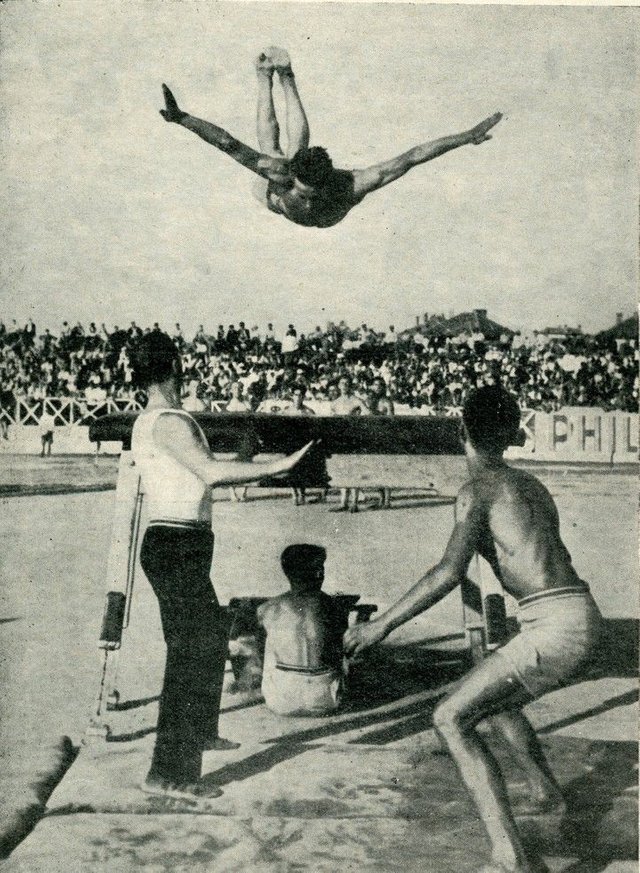
Gymnastics - the backbone of Sokol exercise, Slet (rally) in Belgrade in 1937
The Sokol Movement with its values and ideology will impose itself in the half-century period that followed (1891-1941). In the past of the Serbian people, no matter where they were, free or under foreign rule, the Sokol movement played a historic role in the field of education programs, defense, liberation and integration of Serbian and Yugoslav peoples. Striving for high goals - the moral and cultural revival, national freedom and unity of the nation, the strong and versatile personality of members of the Sokol Movement developed. Democracy, patriotism, altruism, belief in the ideals, contributed to the reputation of the Sokols in the population. Sharing the fate of its country and its people, the Sokol organization raised itself so that it developed in the Sokol movement, a movement in the service of the nation.
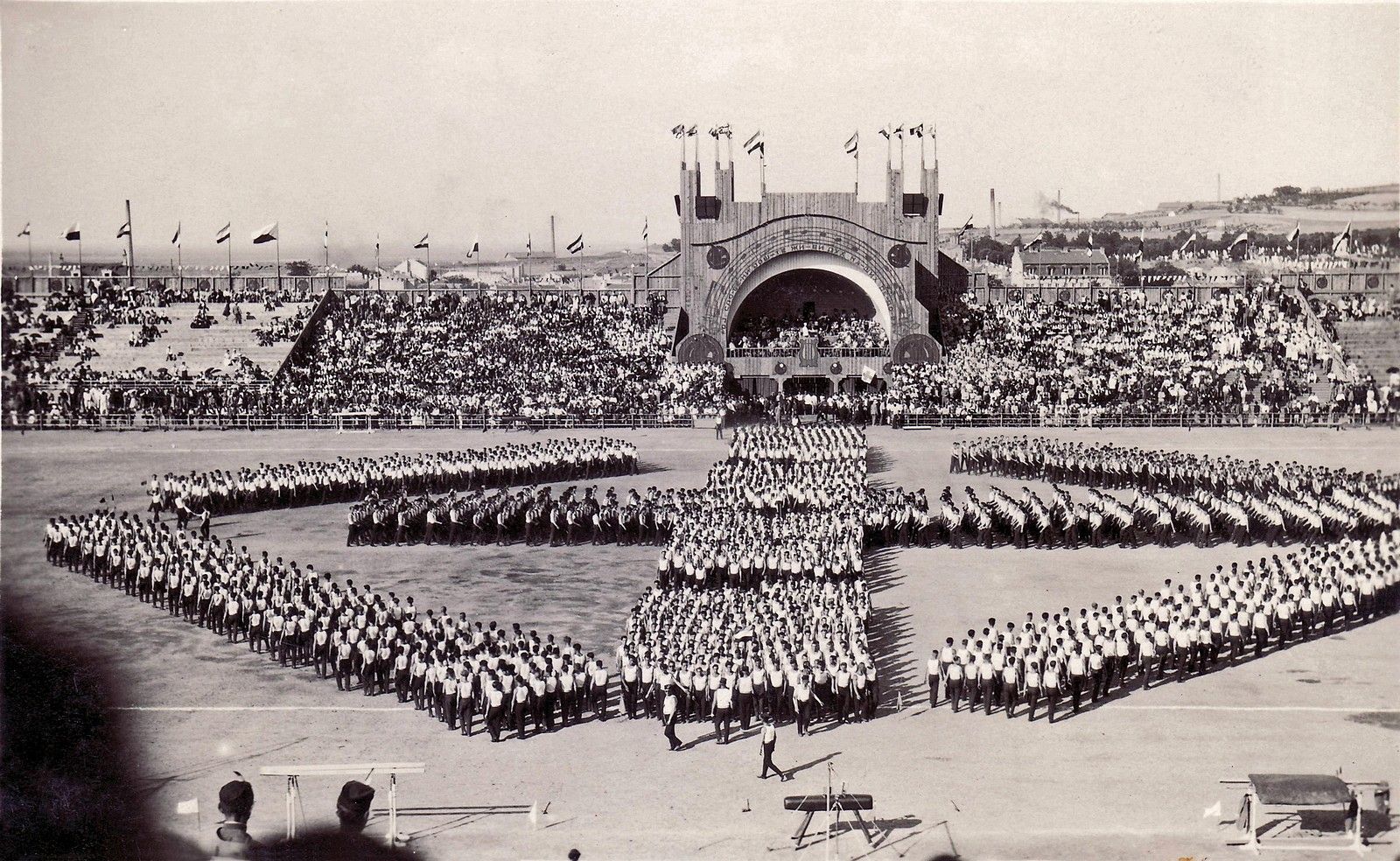
Mass attendance in the Sokol movement, The first All-Sokol Slet (rally) of Sokols in the Kingdom of Yugoslavia, Belgrade 1930
After the introduction of The 6-January Dictatorship (1929), the Sokol movement as a movement and a system of exercise in the process of statism was recognized as an irreplaceable unity factor of three nations, a symbol of the power of the new state and a powerful tool in the dissemination of versatile impact on the population. However, the ideals of King Aleksandar I Karadjordjevic proved to be unrealistic in the short passage of time, and despite all the victims submitted, South Slavic unity did not flourish, and Yugoslav state became vulnerable. His aspirations to become Balkan sovereign, even to the detriment of the Serbian people, cost him life. Dreams of creating a strong state were painted exactly in the Sokol movement because Sokol was flying to higher and higher achievements of numerous state, dynastic, national, social, cultural and other objectives.
In the days which were fateful for the survival of the state, there were a lot of opportunities when the Sokol organization justified, among others, patriotic attributes of its more than sports movement. For this reason, the Sokols were sentenced to imprisonment, persecution, internment, they were shot and hanged due to the “treasonable “court trials. The spirit of patriotism and strong national as well as all-Yugoslav feeling followed them, and later, in conflicts with the separatist and pro-fascist forces that were smashing the integrity of the Yugoslav state. In the first days of the occupation of the country, about 350,000 Sokols were considered defenders of the Kingdom of Yugoslavia and the enemy to the occupation authorities.
The Second World War interrupted the highly developed Sokol activity in many fields. After the liberation, a number of gym activities and events were initiated by the new government and were based on ideas, experiences, and practices of the Kingdom of Yugoslavia Sokol Movement. Solutions from the pre-war Sokol Movement - ideas, organization, terminology and methodology of exercise, public classes, gymnastics academy and mass rallies, programs, Yugoslav idea, brotherhood and unity, work actions, relays, five-year plans, halls construction, the identification of young people with a ruler ... - it is not difficult to recognize as "copied". Ironically, although the Sokol was rejected, the realization of the post-war physical education program had to rely on the experience and work of pre gymnasts and the Sokol, the new-old emissaries of thoughts and aspirations, just not anymore the Sokol, but physical-culture. Otherwise, it could not be because Sokols set the standards which at that time were very high, and which in some respects will never be repeated.
In the mass membership of these valuable fans gymnastic skills was a charismatic leader who will soon outgrow visionary movement skills by creating a system of exercise. Тhe most dedicated wеre Stevan Todorovic, Vladan Djordjevic, Vojislav Rasic, Laza Popović and Miroslav Vojinovic - why not say - bards of physical culture, the pioneers of physical exercise, founders of gymnastics and the Sokol movement, the erudite in the truest sense of the words, the giants who were faithfully followed towards the lofty goals by many, sergeants, frontmen, mayors and the army trainees.
Traces of gymnasts and Sokols from the cultural heritage of our past, sports, social, cultural, historical, crisscrossed and still visible, make gymnastics and the Sokol movement the peculiar phenomena, which in our environment, such as it is, has survived for three centuries.
Sources: Vladan M. Vukašinović, Gymnastics and the Sokol Movement in Serbia until 1941, the giants of Serbian gymnastics and Sokol movement (monographic publication), 2016; Vladan Vukašinović et al, It started with gymnastics... physical exercises, gymnastics, Sokol physical exercises ... (work in the journal Physical education and sport through centuries), 2017; Vladan M. Vukasinovic, The Sokol Movement in Smederevo, 101 years of the Sokol Movement and 128 years of gymnastics in Smederevo (1885-2013) (monographic publication), 2013. Old photographs of unknown authors are from the collection of Vladan Vukasinovic, photo editing @lighteye.
Одлично @vvladan, нисмо се бадава мучили око извлачења ових историјских фотографија из мрака :)
Нисмо @lighteye, а сећаш се како смо „ратовали“ око прелома монографије? :)))